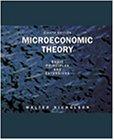18.2 A monopolist faces a market demand curve given by d = 70 - P. a. If...
Question:
18.2 A monopolist faces a market demand curve given by d = 70 - P.
a. If the monopolist can produce at constant average and marginal costs of AC = MC = 6, what output level will the monopolist choose in order to maximize profits? What is the price at this output level? What are the monopolist's profits?
b. Assume instead that the monopolist has a cost structure where total costs are described by TC= .25(?
2
-5g+ 300.
With the monopolist facing the same market demand and marginal revenue, what pricequantity combination will be chosen now to maximize profits? What will profits be?
c. Assume now that a third cost structure explains the monopolist's position, with total costs given by TC= .0133Q 3
-5Q+ 250.
Again, calculate the monopolist's price-quantity combination that maximizes profits.
What will profit be? (Hint: Set MC = MRas usual and use the quadratic formula to solve the second-order equation for Q.)
d. Graph the market demand curve, the MR curve, and the three marginal cost curves from parts (a), (b), and (c). Notice that the monopolist's profit-making ability is constrained by (1) the market demand curve (along with its associated Mi? curve) and (2) the cost structure underlying production.
Step by Step Answer:

Microeconomic Theory Basic Principles And Extensions
ISBN: 9780030335938
8th Edition
Authors: Walter Nicholson






